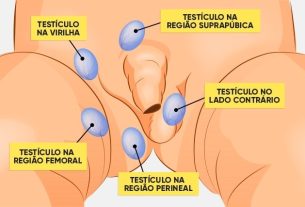Varicocele surgery is generally indicated when a man experiences testicular pain that does not go away with medication, in cases of infertility or when low levels of plasma testosterone are detected. Not all men with varicocele need to undergo surgery, as most men have no symptoms and maintain normal fertility.
Surgical correction of varicocele leads to an improvement in semen parameters, leading to an increase in the total number of motile sperm and a reduction in the levels of free oxygen radicals, leading to better sperm function.
There are several surgical techniques for treating varicocele, however, open inguinal and subinguinal surgery is the most used, due to the high success rate, with minimal complications. See more about varicocele and learn how to identify the symptoms.

1. Open surgery
Open surgery, despite being technically more difficult to perform, usually has better results in curing varicoceles in adults and adolescents and has minimal complications, with a lower relapse rate and less risk of complications. Furthermore, it is the surgical procedure that is associated with higher spontaneous pregnancy rates compared to other techniques.
This technique is performed under local anesthesia and allows the identification and preservation of the testicular artery and lymphatic vessels, which is important to prevent testicular atrophy and hydrocele formation. Find out what hydrocele is and how to treat it.
2. Laparoscopy
Laparoscopy is more invasive and more complex compared to other techniques and the complications most often associated with it are damage to the testicular artery and damage to the lymphatic vessels, among other complications. However, it has the advantage of simultaneously treating bilateral varicocele.
Despite allowing greater magnification compared to other techniques, cremasteric veins, which can contribute to varicocele recurrence, cannot be treated by this technique. Other disadvantages include the need for general anesthesia, the presence of a surgeon with skill and experience in laparoscopy, and high operating costs.
3. Percutaneous embolization
Percutaneous embolization is performed on an outpatient basis, under local anesthesia and is therefore associated with faster recovery and less pain. This technique presents no risk of hydrocele formation, as there is no interference with the lymphatic vessels. However, it has some disadvantages, such as exposure to radiation and high costs.
This procedure aims to stop the flow of blood going to the dilated vein in the testicle. To do this, a cut is made in the groin, where a catheter is inserted into the dilated vein, and embolizing particles are subsequently injected, which block the passage of blood.
Generally, varicocele treatment significantly improves sperm concentration, mobility and morphology, with seminal parameters improving around three months after surgery.
What is recovery like from surgery?
After surgery, the patient can usually go home the same day. Some care should be taken, such as avoiding strenuous activities in the first month after surgery, changing dressings and using pain medication, according to the doctor’s instructions.
Return to work must be assessed during consultation with the urologist, during surgery review, and sexual activity can be resumed after 7 days.
Bibliography
- PORTILHA, Maria ANtónia. Percutaneous embolization of varicoceles. 2010. Available at: <http://clinicauniversitariaradiologia.pt/biblio_data/Embolizacao%20percutanea%20de%20varicocelos.pdf>.
- BRAZILIAN SOCIETY OF UROLOGY BRAZILIAN COLLEGE OF RADIOLOGY. Varicocele. 2008. Available at: <https://diretrizes.amb.org.br/_BibliotecaAntiga/varicocele.pdf>. Accessed on 23 Jul 2019
- MACHADO, José Pedro Dating Leitão. Varicocele Treatment. Integrated Masters in Medicine, 2014. Faculty of Medicine of the University of Porto.

Sign up for our newsletter and stay up to date with exclusive news
that can transform your routine!
Warning: Undefined array key "title" in /home/storelat/public_html/wp-content/plugins/link-whisper-premium/templates/frontend/related-posts.php on line 12
Warning: Undefined array key "title_tag" in /home/storelat/public_html/wp-content/plugins/link-whisper-premium/templates/frontend/related-posts.php on line 13



